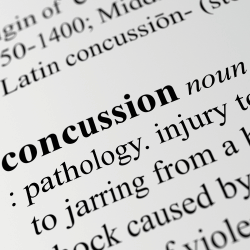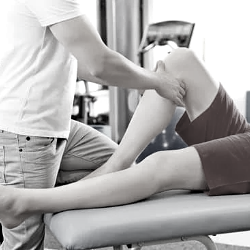Injury Prevention and Exercise
Posted on November 24, 2023 by Movement Health in Exercise Physiology, Just saying..

Sports injuries are injuries that occur during participation in sport or general exercise. They typically affect the various tissues of the musculoskeletal system such as the muscles, tendons, ligamentous structures, and bones. Sports injuries can be classified as acute or chronic, an acute sports injury could be a skier who twists their knee placing shearing loads through the joint rupturing the anterior cruciate ligament, chronic sports injuries develop over time and an example could be a runner who overloads their lower limbs over an extended period resulting in tibial (shin bone) stress fractures (NIAMS, 2021). At the physiological level, a sports injury occurs when the physical loads placed on a musculoskeletal tissue exceeds its ability to handle that load (Brunker & Khan, 2010).
When we consider an athletes experience wholistically sports injuries are considered to be complex and emergent. Complex means sports injuries are caused by a mix of parts and the dynamic relationships between these parts. An example could be a dancer who is getting towards the end of a week-long intensive workshop, who attempts a new landing and sprains their ankle. The complex parts may be fatigue and learning unfamiliar chorography, the interplay then emerges as a compromised landing and subsequent sprained ankle (Bittencourt, 2016).
Due to the complex (and emergent) nature of sports injury presentations, attempts to formulate movement screens that can identify an athlete’s injury risk profile have met with limited success (Bahr, 2016; Chimera & Warren, 2016). While movement screening for injury risk has proven challenging, a few broad themes have emerged. A constant theme in this space has been a positive association between increased risk of knee injury and poor organisation of the lower limbs in dynamic (athletic) positions such as landing and cutting/sidestepping. Factors that may contribute to poor lower limb organisation include poor core stability, landing with a heel strike, weak hip abduction strength and increased knee valgus (Larwa et al. 2021). Due to the complex interaction of these variables, there is yet to emerge a valid screening tool for an athlete’s lower limb organisation (Dischiavi et al. 2019). Another theme in discussions about movement screening for injury risk involve the strength of the upper limbs and their ability to generate force in end range positions such as overhead. Measurement of these attributes utilises the ASH test and requires the availability of force deck technology (Ashworth, 2023).
‘The causes for sports injuries are complex making it difficult to screen for athletes that may be predisposed to injury.’
Is there anything that can be done to reduce the risk of a sports injury?
A good starting point is to increase strength. There is plenty of evidence supporting the idea that an athlete who engages in strength training will reduce their likelihood of a sports injury. An athlete that engages with strength training starts with a familiarisation/technique phase that introduces them to a variety of strength developing lifts, next the strength training principles of periodisation and progressive overload are applied. Over time the strategically programmed strength training loads positively develop an individual’s musculoskeletal tissues capacity to handle athletic demands (Case et al. 2020; Lauersen et al. 2018).
Another approach to reducing sports injury risk involves neuromuscular exercise, this type of exercise focuses on skills such as balance, agility, and coordination (Emery et al. 2015). Neuromuscular exercise is performed at loads and intensities that are insufficient to affect musculoskeletal tissue physiology like strength training (Lauersen et al. 2018), instead neuromuscular exercise focuses on organisation of the athlete’s nervous system. The mechanism by which neuromuscular exercise prevents injuries involves training the athlete to assume athletic positions that are not likely to load musculoskeletal tissue(s) beyond their capacity (Emery et al. 2015).
The FIFA 11+ is a neuromuscular exercise program that has been developed for football (soccer) players, it includes a mix of running drills, balance and jumping (plyometric) exercises. As football is the world’s most popular sport the effectiveness of the FIFA 11+ for reducing lower limb injuries has been well researched and the evidence supporting its use with young and adult football players is substantial (Stephenson et al. 2021). Following the example set by the FIFA 11+ many other sports have formulated their own neuromuscular injury prevention programs, some examples being the Netball Australia KNEE program (Netball Australia, 2023) and the World Rugby Activate program (World Rugby, 2023).
Due to the complex nature of sports injury presentations (Bittencourt, 2016) an athlete who engages in strength training or neuromuscular exercise programs like the FIFA 11+ is not guaranteed to avoid injuries, only that injury risk has been reduced or mitigated (Shrier et al. 2023).
Strength training or neuromuscular exercise?
Strength training and neuromuscular exercise are both effective ways for reducing or mitigating sports injury risk, however the data would suggest strength training has a greater preventative effect (Lauersen et al. 2018). Participation in strength training requires access to a training facility and the support of a strength and conditioning professional, these may be a barrier to participation for an athlete (especially at the community sport level). A more accessible, alternative approach may involve a sports coach undertaking some basic familiarisation with a neuromuscular exercise program (like the FIFA 11+) and regularly incorporating elements into their athletes training sessions. Such an approach has proven highly effective with team sports (Stephenson et al. 2021).
What else do we know?
There is also research in the injury prevention and exercise space examining relationships between certain types of injuries and specific exercises. Broadly there’s good evidence supporting balance exercise as a means of reducing ankle injuries (Al Attar, ii2022) and plyometric lower limb exercise(s) reducing the incidence of anterior cruciate knee ligament injuries (Al Attar, i2022). More specifically there’s good evidence that inclusion of the Nordic hamstring curl exercise in injury prevention exercise programming can halve the incidence of hamstring soft tissue injuries (van Dyk et al. 2019). There is also a good amount of support in the injury prevention literature for use of the Copenhagen adductor exercise as a means of reducing the likelihood of an athlete experiencing adductor soft tissue injuries (groin strains) (Schaber et al. 2021). All these pieces of research are likely used foundationally when preparing programs such as the FIFA 11+.
How can I use this information to formulate injury prevention exercise programming?
Start with a ‘needs analysis’ of the sport you are coaching or participating in, ask what types of skills or movements are athletes required to perform? This may include skills/movements such as running, jumping, squatting, reaching, throwing, cutting, twisting, landing etc (there’s more). Once you have established an understanding of the skills/movements required for a sport, program some strength training for the body tissues that are required to perform these skills/movements. Next you can supplement with neuromuscular exercise that challenges these body tissues in ways that replicate the demands of the chosen sport and that can be progressed over time.
Thanks for reading, Warwick..
(If you found this article helpful and would like to support my writing, you could, shout me a coffee).
Al Attar, W.S.A., Bakhsh, J.M., Khaledi, E.H., Ghulam, H., & Sanders, R.H. (i2022). Injury prevention programs that include plyometric exercises reduce the incidence of anterior cruciate ligament injury: a systematic review of cluster randomised trials. Journal of Physiotherapy, 68(4), 255-261.
Al Attar, W.S.A., Khaledi, E.H., Bakhsh, J.M., Faude, O., Ghulam, H., & Sanders, R.H. (ii2022). Injury prevention programs that include balance training exercises reduce ankle injury rates among soccer players: a systematic review. Journal of Physiotherapy, 68(3), 165-173.
Ashworth, B. (2023, November). Understanding the shoulder: Assessing injury risk and maximising performance. Sportsmith. https://www.sportsmith.co/articles/understanding-the-shoulder-assessing-injury-risk-and-maximising-performance/
Bahr, R. (2016). Why screening tests to predict injury do not work-and probably never will…: a critical review. British Journal of Sports Medicine, 50(13), 776-80.
Bittencourt, N.F.N., Meeuwisse, W.H., Mendonça, L.D., Nettel-Aguirre, A., Ocarino, J.M., & Fonseca, S.T. (2016). Complex systems approach for sports injuries: moving from risk factor identification to injury pattern recognition-narrative review and new concept. British Journal of Sports Medicine, 50(21), 1309-1314.
Brunker, P., & Khan, K. (2010). Clinical Sports Medicine Revised Third Edition. McGraw-Hill Education Australia.
Case, M.J., Knudson, D.V., & Downey, D.L. (2020). Barbell Squat Relative Strength as an Identifier for Lower Extremity Injury in Collegiate Athletes. Journal of Strength and Conditioning Research, 34(5), 1249-1253.
Chimera, N.J., & Warren, M. (2016). Use of clinical movement screening tests to predict injury in sport. World Journal of Orthopedics, 7(4), 202-217.
Dischiavi, S.L., Wright, A.A., Hegedus, E.J., & Bleakley, C.M. (2019). Rethinking Dynamic Knee Valgus and Its Relation to Knee Injury: Normal Movement Requiring Control, Not Avoidance. Journal of Orthopaedic & Sports Physical Therapy, 49(4), 216-218.
Emery, C.A., Roy, T.O., Whittaker, J.L., Nettel-Aguirre, A., & van Mechelen, W. (2015). Neuromuscular training injury prevention strategies in youth sport: a systematic review and meta-analysis. British Journal of Sports Medicine, 49(13), 865-870.
Larwa, J., Stoy, C., Chafetz, R.S., Boniello, M., & Franklin, C. (2021). Stiff Landings, Core Stability, and Dynamic Knee Valgus: A Systematic Review on Documented Anterior Cruciate Ligament Ruptures in Male and Female Athletes. International Journal of Environmental Research and Public Health, 18(7), 3826.
Lauersen, J.B., Andersen, T.E., & Andersen, L.B. (2018). Strength training as superior, dose-dependent and safe prevention of acute and overuse sports injuries: a systematic review, qualitative analysis and meta-analysis. British Journal of Sports Medicine, 52(24), 1557-1563.
National Institute of Arthritis and Musculoskeletal and Skin Disease. (2021). Sports Injuries. https://www.niams.nih.gov/health-topics/sports-injuries
Netball Australia. (2023, November). Resources. https://knee.netball.com.au/resources/
Schaber, M., Guiser, Z., Brauer, L., Jackson, R., Banyasz, J., Miletti, R., & Hassen-Miller, A. (2021). The Neuromuscular Effects of the Copenhagen Adductor Exercise: A Systematic Review. International Journal of Sports Physical Therapy, 16(5), 1210-1221.
Shrier, I., Impellizzeri, F.M., & Stovitz, S.D. (2023). Prevention versus risk reduction or mitigation: Why create unnecessary battles? Journal of Science and Medicine in Sport, 26(7), 372-374.
Stephenson, S.D., Kocan, J.W., Vinod, A.V., Kluczynski, M.A., & Bisson, L.J. (2021). A Comprehensive Summary of Systematic Reviews on Sports Injury Prevention Strategies. Orthopaedic Journal of Sports Medicine, 9(10).
van Dyk, N., Behan, F.P., & Whiteley, R. (2019). Including the Nordic hamstring exercise in injury prevention programmes halves the rate of hamstring injuries: a systematic review and meta-analysis of 8459 athletes. British Journal of Sports Medicine, 53(21), 1362–1370.
World Rugby. (2023, November). Activate Injury Prevention Exercise Programme. https://passport.world.rugby/injury-prevention-and-risk-management/activate-injury-prevention-exercise-programme/




